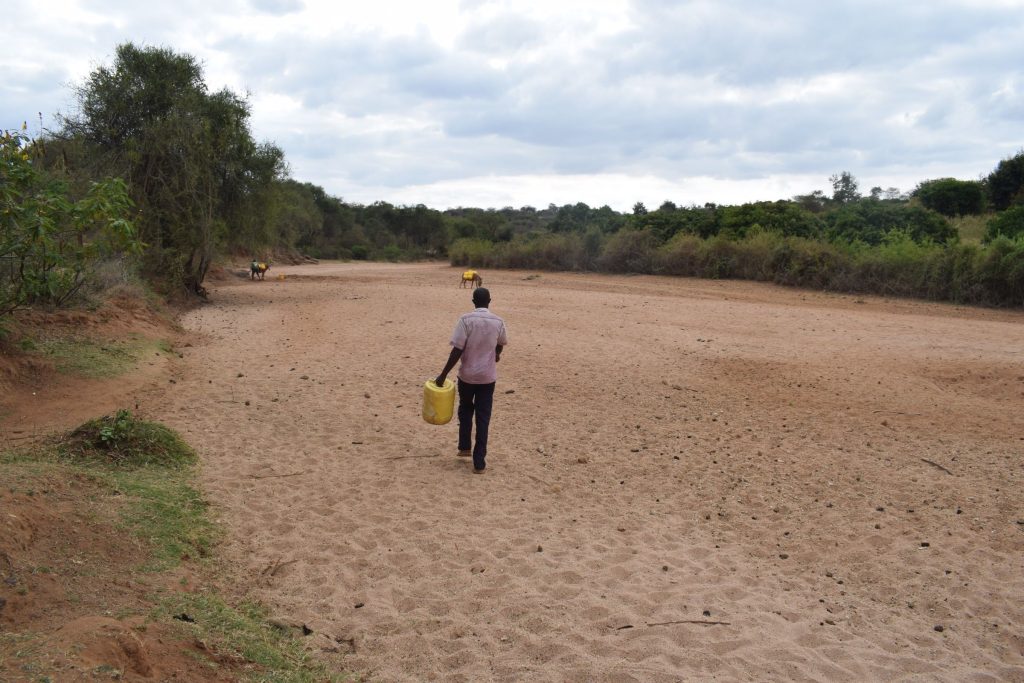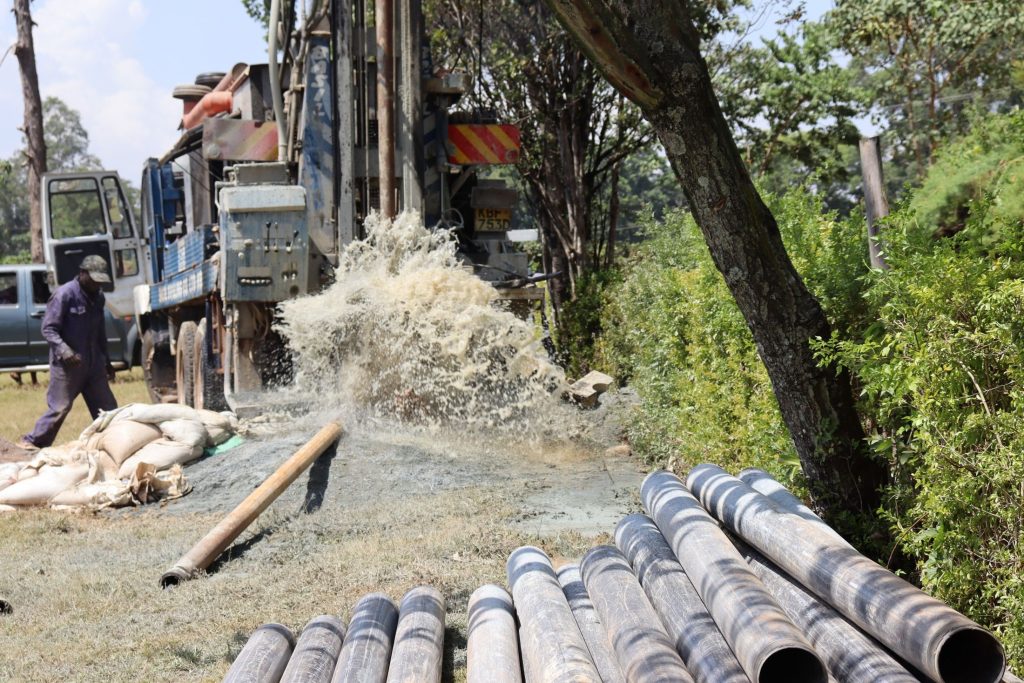Enabling Zero Emissions on the Ground this Zero Emissions Day
In honor of International Zero Emissions Day tomorrow, we thought we’d update you on how climate change impacts our work and the measures our local teams are taking to counteract its effects.
Our staff members are battling on the front lines of climate change, both in educating their water users about its effects and in working to provide life-giving water even in the face of historic droughts, high heat, rising sea levels, and increasingly erratic rainfall patterns.
In most areas we work in, economic water scarcity (where people lack access to water due to financial constraints) has been our main struggle. However, this may be changing with the shifting climate regionally and worldwide.
Nowhere is physical water scarcity more evident for us than in our Southeast Kenya service area, which has experienced markedly lessened rainfall levels and higher overall temperatures. The most troublesome consequence for our work is that the seasonal rivers many depend on for water are now drying out for longer stretches.

“In dry seasons, the local communities exploit water from these sandy riverbeds by digging shallow holes and wells,” explained Cornelius Kyalo, Executive Director of our team in Southeast Kenya.
“The main economic activities of the three targeted counties are subsistence agriculture, beekeeping, small-scale trade, and dairy farming. However, owing to erratic and unreliable rainfall, the common viable economic activity has been limited to livestock rearing and small-scale farming.”
And usual methods to combat this water scarcity are no longer working.
“The pastoralists, small-scale holders, and subsistence farmers are [too] poor to invest in rainwater harvesting systems, and they don’t have the skills for their realization. Furthermore, Machakos, Makueni, and Kitui counties are characterized by highly erratic and seasonal rainfall, which is one of the major factors limiting agricultural production and, therefore, water and food security.”
Unpredictable rains also affect Western Kenya, where most of our water projects are.
“From our monitoring and evaluation data, we have witnessed a lot of downtime with rainwater harvesting tanks implemented in schools due to seasonality: a clear indication of climate change,” said Executive Director Catherine Chepkemoi, who works in Western Kenya. “The springs implemented in our communities have not been spared either, as many of them, too, are experiencing issues with seasonality.”
“The shift in climate has affected weather patterns in the world and our region,” said Emmah Nambuye, who heads our team in the Mumias East sub-county of Kenya. “The following are effects of climate change: warmer temperatures, more severe storms, increased drought, more health risks, uncertain agriculture calendar, poverty, and displacements. We have been able to learn the coping mechanisms the hard way.”
These adverse effects have us reconsidering the projects we decide to implement for the future. Projects like rainwater harvesting tanks and protected springs depend on rainfall levels more than borehole wells.

But this upgrade to borehole wells brings its own challenges.
“The resources involved in borehole drilling [are] costly given the fact that [the] water table has gone very low and the aquifers are no longer as shallow as they used to be,” Emmah explained.
We want our projects to help people for the long haul (and not just for the next few years), so borehole wells are the better option — and not just in Kenya.
“We are seeing the water table drop as a result of climate change, and this is having two significant impacts,” said Program Officer Tom Murphy, who works with our local staff in Sierra Leone.
“The shallow hand-dug wells are increasingly seasonal, to the point where we no longer consider them to be a reliable source of water in the region where we work. Therefore, we converted all of our old hand-dug wells into boreholes, which go significantly deeper (100 meters versus 15 or so meters).”

“The lower water table is allowing for the saltwater from the ocean to make its way into the water supply for communities along the coast,” Tom continued.
“This is rendering once-safe and -clean wells salty and unusable. As a result, we are going to have to engage in creative solutions to reach communities where drilling is not an option. This will take some time, but it is an adaptation that we are being forced to consider to meet our goals of complete coverage.”
Even with all the doom and gloom of climate change, hope springs eternal.
In Southeast Kenya, where our program includes extensive agricultural assistance, self-help groups are learning to plant more drought-resilient crops, so even as rainfall patterns change, their crop yields will remain steady.
Cornelius said: “[We] promote the cultivation of cowpeas (black-eyed peas), sorghum, pigeon peas, Dolichos, and green grams (mung beans), which are drought-tolerant and able to mitigate the effects of climate change, instead of maize, which requires large quantities of water.”
Our teams in Western Kenya are working to educate their communities about climate change. One area in which they’ve made a lot of headway is making people aware of the harmful properties of non-native eucalyptus trees, which are easy to grow and have become an easy way to produce timber and make money selling firewood. However, eucalyptus trees guzzle up more than their fair share of water, which harms the local ecosystems.
“We are sensitizing our communities on [the] effects of climate change as mitigation measurements,” said Catherine from Western Kenya. “We are encouraging them to plant water-friendly trees around all water sources and adopt green energy as a way of conserving the environment.”
As we continue to collaborate with local leaders and team members on the best solutions to address the problems they’re facing, water will only become more scarce with time. With each community we enter, we commit to stand alongside them when they face issues and collaborate to solve them. For that, we need your help.
Climate change presents an endless stream of challenges — the effects of which we may not yet know. The only way we can hope to meet them is through your generosity. While we pledge not to abandon any of the communities, schools, and health centers we have provided with a water source, as our list of water projects grows, so do the challenges.
Our changing world is a monumental problem, but your role in addressing its water crisis facet couldn’t be simpler. Join us as we navigate these struggles together — you, us, our local teams, and the community members we serve. Your help is both valuable and urgently needed.
Home More Like ThisTweet